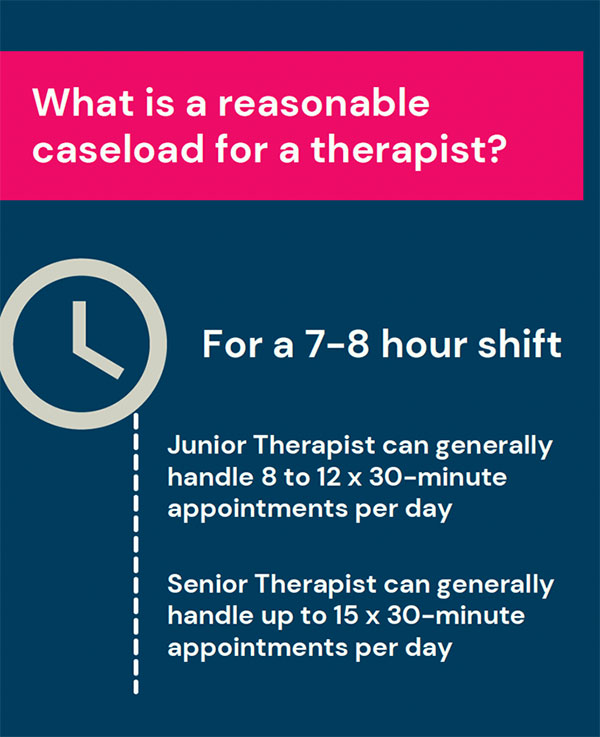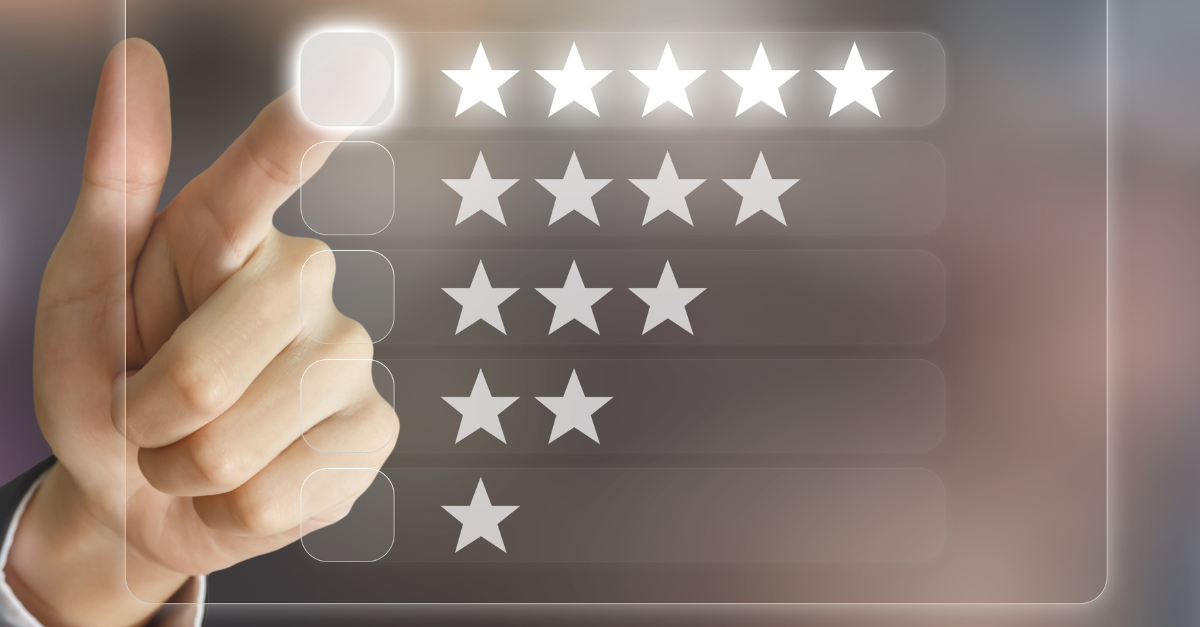Make an Appointment
For full-time physiotherapists, it can feel like managing your client load is a constant juggling act. And while identifying your ideal caseload will always ebb and flow, there are some considerations to keep in mind.
Here, we’re helping you figure out a reasonable caseload, why you shouldn’t take on too much, and how you can find more clients if you need them.
What is a reasonable caseload for a therapist?
A reasonable caseload for a physiotherapist depends on how long your shifts are and your experience.
For shifts lasting 7 to 8 hours, at Physio Inq, a Junior Therapist can generally handle 8 to 12 30-minute appointments per day and a Senior Therapist can generally handle up to 15 sessions per day.
This leaves time to complete the necessary paperwork and take breaks.

However, if you’re just starting out, take things slow and see what you can manage. Also, be sure to add some buffer time between appointments and track how long each appointment requires.
For example, you’ll want to leave time at the start of an appointment for a debrief with your client, ample time for the therapy itself, and a few minutes at the end for questions or homework you might assign.
As you get more comfortable, you’ll be able to naturally stay within your time constraints while offering your clients the best session possible.
What is the average caseload for a therapist?
The average caseload for a full-time physiotherapist is anywhere from 8 to 15 clients per day with 25 to 45 clients on their overall roster.
As a physiotherapy business, it’s important for therapists to take on a rather robust caseload to account for cancellations or schedule changes. Sometimes you might even take on more clients than you can realistically handle to protect you from losing out.
Still, it’s important to find a healthy balance between the business side of things and making sure you’re not burning out. You also want to be sure you’re giving your clients your best work.
It’s a tough one, but once you find a sweet spot, it becomes easier to roll with the punches.
Why is it important to manage your caseload?
It’s important to manage your client caseload for a few reasons, both for the sake of your clients and for yourself.
Clients notice when you don’t remember their situation
Providing a healthcare service is serious business. You’re managing your clients’ lives and bodies, so it’s important that you have a clear understanding of your client’s situation. This becomes a lot more difficult when you’re stretched too thin.
Plus, clients notice when you don’t remember their name, injury, or treatment plan. Soon enough, they’ll lose trust in your expertise altogether. So, it’s best to find an ideal client load instead.
Clients also notice when you start a session late but end it on time
Similarly, clients rightfully feel slighted when you’re rushing around, starting your sessions late but ending right on time to make it for your next appointment.
This is a great way to tarnish your reputation but not a great way to run your physiotherapy practice.
You’re not doing your best work when you’re rushing from client to client.
At the end of the day, you can’t do your best work when you’re treating clients back-to-back to back. The last thing you want to do is start making silly errors or worse.
So, keep that in mind and remember why you do physiotherapy in the first place. Reminding yourself of your why is a great way to stay in your sweet spot with client load.
You’re risking burnout otherwise.
Finally, you risk burning out if you continue to take on a caseload that’s way too heavy. It’s simply not worth it.
You might think you’re being super productive and efficient by packing in as many clients as possible, but when you need two weeks to recover from a six-month stint, it’s counterproductive.
How can a therapist get more clients?
Physiotherapists can get more clients through networking, advertising, partnering with other business, and working with a recognisable brand.
And even if you have enough clients, you’re probably always looking for better clients.
The best thing to do before you begin advertising is to make sure you can handle more clients with your current caseload and ensure that your reputation is solid.
Then, when you start marketing, the clients will inevitably come to you.
You can advertise yourself as a therapist through a variety of methods including:
- Networking via word of mouth, social media and more!
- Gaining referrals from Private Health Providers
- Local Advertisements
- Connecting with others through Business Partnerships
- Improving Brand Recognition
Date Published: Tuesday, February 8, 2022
Date Modified: Tuesday, July 16, 2024
Need to get into direct contact with ur Client Services team? We're all ears. Call our team directly on 1300 731 733



